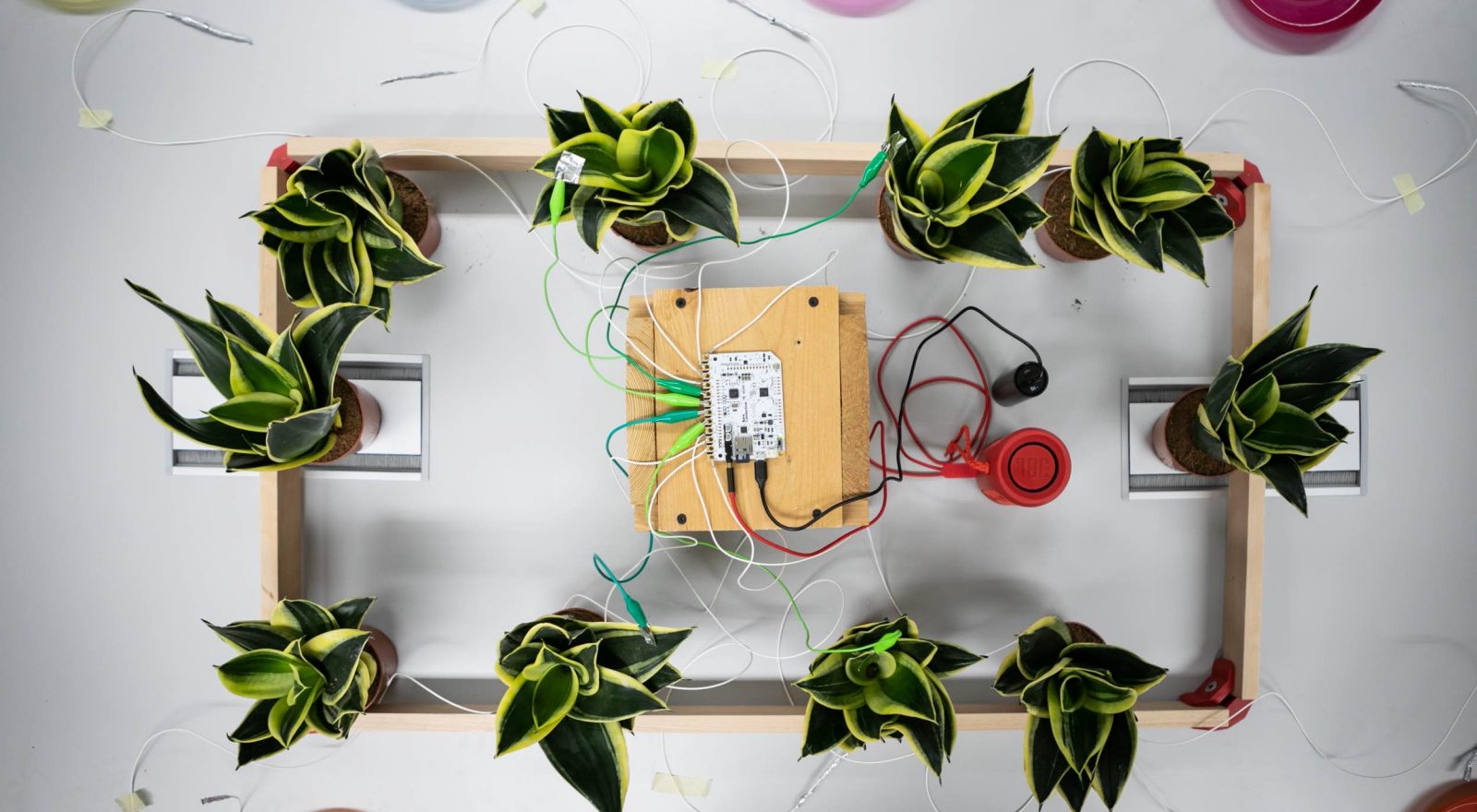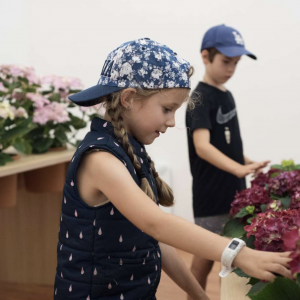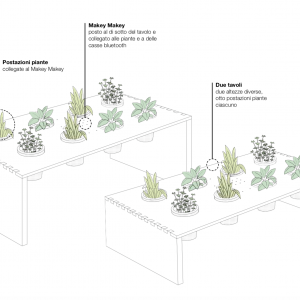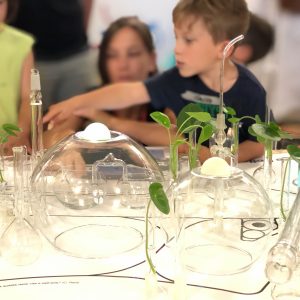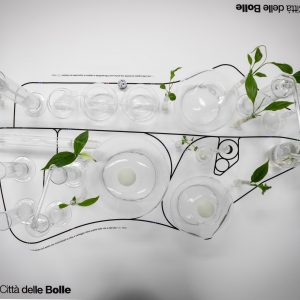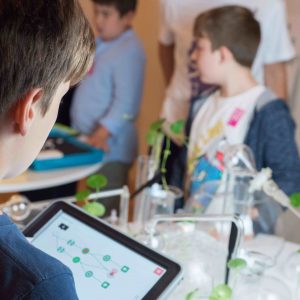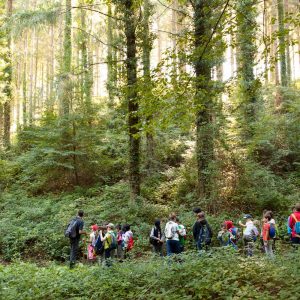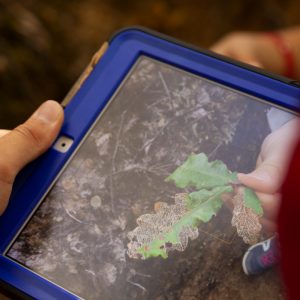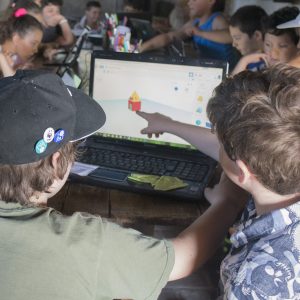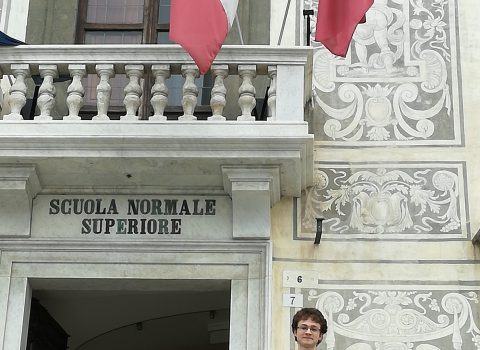Digital technologies and art to develop new ways of learning
How to help children and teens to develop digital skills through games and art strategies?
One of the works that has led me to reflect on the relationship between Art and Technology often lately is that of the Chinese duo Suan Yuan and Peng Yu: a large airtight cube that houses an imposing and gigantic robotic arm. As the industrial robot observed in the assembly lines from which the artists took inspiration, however, this modified version is programmed to satisfy the will of its creators: “it was taught to perform 32 movements, dance steps and gestures, such as “handshake with bow”, “scratching”, “butt wiggling” “(see various authors May You Live in Interesting Times, Biennale Arte 2019 – Short Guide). At the same time, the robot has the task of making sure that a dense and bright red liquid remains within a certain area. Thus, there is a constant interaction between the natural element and robotic one.
This work tells us, in a rather straightforward way, how art can act as a “thought practice” but also as a game (a preferred resource of learning and relationships) capable of developing the ability to create new combinations and connections between facts, things and people dismantling our idea of technology as merely functional and able to improve artificial production processes only.
The question that we have asked ourselves, that we keep asking ourselves, and which we have partly tried to answer at DENSA – the cooperative I co-founded, is therefore the same with which this article opens: how can we help children and teens develop digital skills through games and by introducing art models and strategies? Our partial response translat es into applying a method that leads children and youths to play by inventing technology solutions that use an artistic approach developed by following the typical phases of design:
- Exploration, Observation, Listening
- Analysis
- Search
- Development of ideas and projects
- Testing
- Production
- Process review
- Sharing of Results
- Communication
The goal is to stimulate critical thinking and the ability to imagine new functions that will enable the design of “possible worlds”, learning to use technologies to the end of “doing new things” that are ecological, ethical, environmentally and socially friendly, able to promote a new concept of beauty using Games as means of social and cultural expression” (see R. Mazzetti, Ovide Decroly e l’educazione nuova, Roma, Armando, 1945).
In particular, during last year, DENSA, with the collaboration of educators, engineers, teachers, artists, designers and artisans, designed a number of interactive installations and curricular and extra-curricular programs that prompt kids to engage in Technology and Art immersed in natural environments, recovering and applying Munari’s great thought: “A child therefore” immersed “in nature with all their senses, an active observer, attentive to nature’s movements, to the action of water and air… powerful impressions that they will be able to transform into artistic creations and show us the world in which we live in a different way. »
“Alberi Bambini” (young trees) for example is an installation that tells us about how plants communicate, recalling the theories of neurobiologist Stefano Mancuso. It is made up of two tables with 8 plants sitting on each. If touched, the plant emits a sound (each plant produces a sifferent sound) thanks to the interaction with electrical circuits controlled by a double-sided circuit board used as a teaching tool to extend the use of computers and their functions to the reality we live in. The project is the result of a collaboration started by the Listone Giordano wooden flooring company and the This Is My Forest project on the occasion of the KIDSBIT FESTIVAL andwent on with a 30-hour extracurricular class, aimed at developing STEAM (Science, Technology, Engineering, Art, Mathematics) skills in kids funded by the Department for Equal Opportunities of the Prime Minister’s Office.
The program was inspired by the book by Taddia, Baccalario, Ferrari, Il Manuale delle 50 (piccole) Rivoluzioni per Cambiare il Mondo (The Manual of 50 (small) Revolutions to Change the World) Il Castoro editore 2018; by the book by Stefano Mancuso, La Nazione delle Piante (The Nation of Plants), Laterza, 2019; and by the Trace – Talking Tree in the Piegaro Forest project (near Perugia), where a number of digital devices are placed that collect tree data for better forest management.
So, the aim of the course was to develop in the participants knowledge and skills to enable them to design and develop video games with Scratch on topics of social and environmental interest and to create interactions between plants and people using Makey Makey kits.
The reflection on day-to-day interactions that take place between us and the neighborhood, us and nature, us and the city, the city and nature then led to the creation of the “The city of bubbles” installation. A space that reproduces a transparent city in which nature and technology coexist with the aim of defining a model of a new sensitive and child-friendly city. Its forms remind us of Italo Calvino’s tales of the city of Fedora and the utopian projects of the Radical architecture movement of the 60s as well as the urban theories on the Senseable City by Carlo Ratti. It is an environment in which to learn and play with light, sound and movement sensors imagining a light city, clear like bubbles, without walls or foundations and with lots of greenery. A fairer and more equitable city in which to discover many others. A city that is smart because it helps humans to reduce energy usage and waste thanks to children’s programming of sensors that can detect changes in the environment and turn them into outputs that help our cities become more sustainable.
It involves analysis, creative ignitions, problem solving and design through game which, making use of the technological tool, support the production of an articulated and transdisciplinary educational corpus in which the combination of the natural place, Art and the use of New Technologies turns out to be an incredible vehicle for active and profitable learning and an important motivation for expression and creation.
